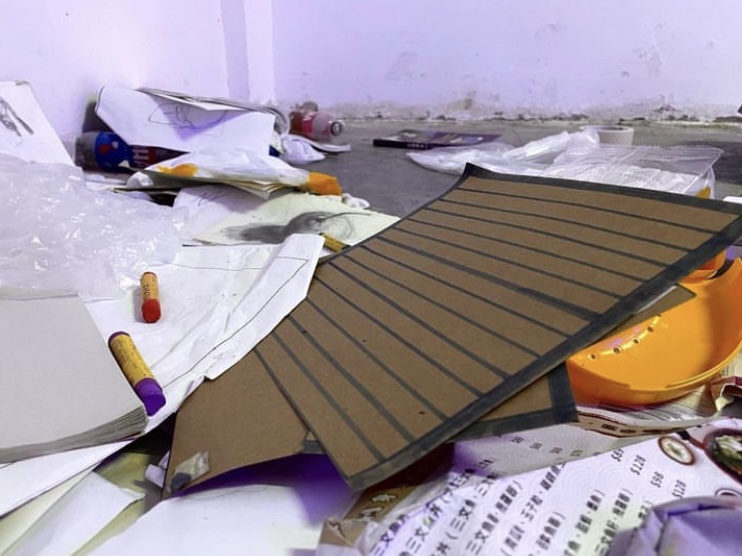MUMBLE
Curated / Venue Support by EJAR
Jul - Aug 2022
Jul - Aug 2022
Curatorial Text: (Mumble as) Vocal Exercise /
The Interchangeability of (Exhibition,) Lab & School
by EJAR
(Excerpt)
One has never heard his / her own “voice” until the day he / she makes the very first sound through the vocal cord. This very first sound, uttered from the mouth, takes the forms of air vibration and internal bone conduction, gets to the inner ears and brain and starts staying in memory. That would be the first moment of life one would realize that such is the “voice” (as human traits) belongs to him / her, and this is how one would be recognised sonically by the external world.
Unless one gives up (forced or voluntarily) on communications, on hearing and being heard, internally and externally.
*
The exhibition title Mumble was first proposed by the participating artists, wishing to refer to similarities among their artistic directions and personalities. Defined as “to utter words in a low confused indistinct manner”, the notion “mumble” might befittingly addressing a dilemma - “Mumble” is at one point an action due to the urge of voicing out, yet instead of being loud and clear, the volume was tune down (deliberately or subconsciously), displaying a gesture of uncertainty on whom these mumbles are to be heard.
*
The only way to hear our own voice is through speaking. Even if what is being vocalized doesn’t seem to make sense to whom heard, if we hold that thought and think - with what criteria should we examine whether a “voice”, in a vocal exercise, would make sense, or even being remarkable and intriguing?
And what if art-related activities are, in general, vocal exercises towards perfection of voices (from craftmanships to sensitivities) or exploring possibilities (and sometimes adressing meanings) to make voices (or noises) that have never been heard of, not by the artists nor by the external world of him / her?
Why (and to whom) would one’s voice matter (or not matter), after all?
...Everyone should therefore build a school on our own, for our own selves, a lab for life experiments.
The Interchangeability of (Exhibition,) Lab & School
by EJAR
(Excerpt)
One has never heard his / her own “voice” until the day he / she makes the very first sound through the vocal cord. This very first sound, uttered from the mouth, takes the forms of air vibration and internal bone conduction, gets to the inner ears and brain and starts staying in memory. That would be the first moment of life one would realize that such is the “voice” (as human traits) belongs to him / her, and this is how one would be recognised sonically by the external world.
Unless one gives up (forced or voluntarily) on communications, on hearing and being heard, internally and externally.
*
The exhibition title Mumble was first proposed by the participating artists, wishing to refer to similarities among their artistic directions and personalities. Defined as “to utter words in a low confused indistinct manner”, the notion “mumble” might befittingly addressing a dilemma - “Mumble” is at one point an action due to the urge of voicing out, yet instead of being loud and clear, the volume was tune down (deliberately or subconsciously), displaying a gesture of uncertainty on whom these mumbles are to be heard.
*
The only way to hear our own voice is through speaking. Even if what is being vocalized doesn’t seem to make sense to whom heard, if we hold that thought and think - with what criteria should we examine whether a “voice”, in a vocal exercise, would make sense, or even being remarkable and intriguing?
And what if art-related activities are, in general, vocal exercises towards perfection of voices (from craftmanships to sensitivities) or exploring possibilities (and sometimes adressing meanings) to make voices (or noises) that have never been heard of, not by the artists nor by the external world of him / her?
Why (and to whom) would one’s voice matter (or not matter), after all?
...Everyone should therefore build a school on our own, for our own selves, a lab for life experiments.






